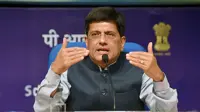New bill to address corporate insolvency resolution may sail through
22 Dec 2015
Continuing its effort to facilitate investment and economic growth, amid opposition protests in Parliament, the Narendra Modi-led government on Monday introduced a bill to put in place an effective legal framework for time-bound resolution of corporate insolvency.
Finance minister Arun Jaitley introduced the much-awaited Insolvency and Bankruptcy Code in Lok Sabha that will speed up liquidation of ailing firms and improve the ease of doing business in the country, thereby facilitating greater investment.
The Insolvency and Bankruptcy Code, introduced as a money bill in the Lok Sabha, seeks to consolidate and amend all laws related to insolvency resolution so as to streamline and end the menace of undue delays in the exit of ailing businesses.
The bill seeks to amend as many as 12 existing laws, including the Companies Act 2013, the Income-Tax Act, and the Payment and Settlement Systems Act 2007.
Since the legislation has been introduced as a money bill, the Rajya Sabha will not be able to reject or amend it once it is passed by the Lower House.
The proposed revamp of the insolvency system is expected to encourage entrepreneurship, improve ease of doing business, and facilitate more investments.
The code allows the corporate debtor itself to initiate the insolvency-resolution process once it has defaulted on a debt.
Also, operational creditors (including the central and state governments and local authorities) are permitted to initiate the resolution process.
This will bring the law in line with international practices, which permit unsecured creditors to file for the initiation of insolvency-resolution proceedings.
The bill also provides for insolvency professionals who will assist in the resolution, liquidation and bankruptcy proceedings envisaged in the code. In fact, the Insolvency and Bankruptcy Code 2015 provides for the setting up of 'Insolvency and Bankruptcy Board of India' (IBBI) to regulate professionals / agencies dealing with insolvency and informational utilities.
The legislation - the Insolvency and Bankruptcy Code 2015 - once passed, will help both businesses and creditor banks as they can recover their dues within a stipulated time.
The Bankruptcy Code fixes a time limit of 180 days, extendable by a further 90 days, for completion of the corporate insolvency-resolution process.
Against this, bankruptcy process under the current system takes anywhere between five and 15 years for lenders to recover money in the event of corporate default.
Member of Parliament NK Premachandran (Revolutionary Socialist Party) raised objections to the introduction of the Bill, claiming it as ''incomplete, inadequate and defective''. He also maintained that sufficient time was not given to members to go through the bill.
Lok Sabha Speaker Sumitra Mahajan, however, rejected his objection and did not entertain Premachandran's request to put off the introduction of the Bill to some other date.






















